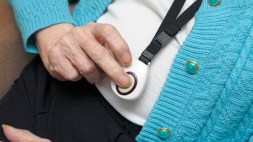5 Hidden Signs of Drug Use

Illicit drug use is a common problem in today’s society. An estimated 50% of people aged 12 and over have used an illicit drug at least one time. Additionally, approximately 13% of people above the age of 11 have had some form of illicit drug use in the past month. Longer-term use of illegal substances is often a pathway toward drug addiction. Since there are negative impacts of of illicit substance use, many people try to hide their drug use from others.
However, that doesn’t mean it isn’t possible to see that someone is using illicit substances. There are some effects that are specific to different illicit drugs, but there are also some effects that are seen across different types of illicit drugs. Here are five hidden signs of drug use someone may notice.
Neglected Responsibilities
In some cases, drug use can cause a person to neglect their responsibilities. This can include falling short at work or at school (including not attending), as well as not handling their obligations at home.
The reasons why the person may neglect their responsibilities can vary. In some cases, the effects of the illicit substance alter a person’s ability to focus on a task. Drug use may also cause a person to have trouble remembering that they have an activity they need to handle. At times, the neglect is more intentional, with someone shirking their responsibilities in favor of other activities, potentially including making time for their drug use.
Behavior Changes
Various behavior changes may also indicate a person is using drugs. A sudden and significant change in their social activities, such as where they hang out and whom they spend time with, could be a sign. Similarly, stepping away from hobbies they once loved is a change in behavior that could indicate a drug problem.
A variety of mood or attitude changes may also occur with drug use. Irritability or complacency can both qualify. Similarly, mood swings outside of the norm may be a red flag.
If a person has a sudden increase in their wish for privacy or begins acting secretively or suspiciously, these could be signs as well. If those are coupled with defensiveness or evasiveness when questioned, that’s a bigger red flag.
Difficulties at School or Work
Even if a person is attending school or making their shifts at work, significant performance decline could be a sign of a drug problem. Similarly, a rapid change in engagement could be indicative of a drug issue. The same is true of chronic lateness in a person who didn’t struggle with tardiness in the past.
Relationship Changes
When a person is using drugs, they may pull away from their usual social circle as a means of hiding their activity. These chnages in their relationships can include spending less time with family members, romantic partners, or friends. Additionally, they may begin spending time with a new social circle, often including other individuals who are using drugs.
Physical Appearance
Drug use can lead to a range of changes in a person’s physical appearance. They may start seeming unkempt or unhygienic, potentially leading to bad odor. In some cases, a person may simply be disinterested in grooming, causing them to look less put together. Bloodshot eyes or pupil sizes that don’t align with lighting conditions can also occur.
Some drugs also produce specific smells during consumption – particularly those that are smoked – and those odors can stick to hair and clothing. Additionally, shifts in appetite caused by drugs can lead to rapid weight changes.
For some, there may be a distinct change in the appearance of their teeth, both when it comes to color and condition. Finally, some drugs may lead to the development of habits like skin picking, leading to the appearance of scratches, raw spots, or scabs.
Next Steps
If you suspect that a loved one is living with substance misuse issues, there are steps you can take to help them. The CDC recommends calling the SAMHSA (Substance Abuse and Mental Health Services Administration) hotline to find out how you can help and what resources are there for you at 1-800-662-HELP.
Medical content reviewed by Brittany Stopa, MD MPH.
Further Reading:
- National Center for Drug Abuse Statistics. “Drug Abuse Statistics.” Accessed 26 Apr 2023. https://drugabusestatistics.org/
- CDC. “Illicit Drug Use.” Last reviewed 20 Oct 2022. https://www.cdc.gov/nchs/fastats/drug-use-illicit.htm
- Crane M. “Signs of drug use & addiction: how to tell if someone is on drugs.” Last updated 30 Mar 2023. https://americanaddictioncenters.org/adult-addiction-treatment-programs/know-is-someone-on-drugs
- Mayo Clinic. “Drug addiction (substance use disorder).” Published 04 Oct 2022. https://www.mayoclinic.org/diseases-conditions/drug-addiction/symptoms-causes/syc-20365112
- Gateway Foundation. “Signs and symptoms of drug misuse in adults.” Accessed 16 May 2023. https://www.gatewayfoundation.org/about-gateway-foundation/faqs/signs-and-symptoms-of-drug-abuse-in-adults/
- CDC. “What is your role in preventing opioid-related overdoses?” Last reviewed 28 Jan 2020. https://www.cdc.gov/opioids/overdoseprevention/help-resources.html





